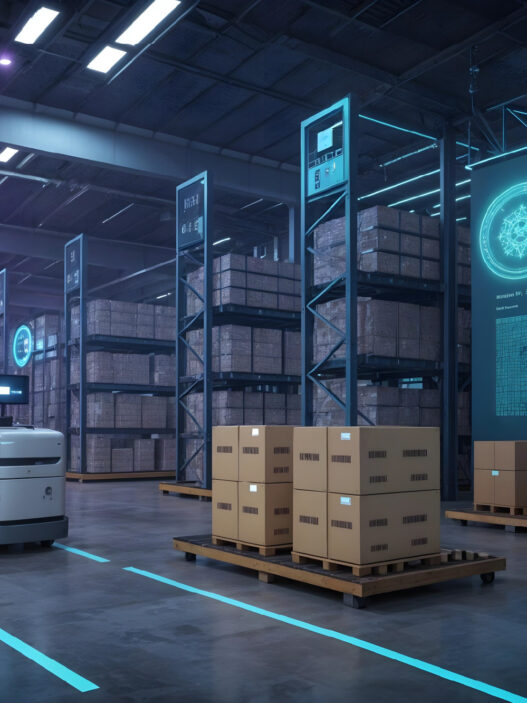The Rise of Edge Security: Why It Matters Now More Than Ever
Understanding Edge Computing: A Game Changer for Cybersecurity
Edge computing has emerged as a revolutionary aspect of the technology landscape, redefining how data is processed, stored, and analyzed. By processing data closer to the source—at the “edge” of the network—rather than relying heavily on centralized data centers, edge computing drastically reduces latency and bandwidth use. This proximity to data sources not only improves the efficiency of operations but also enhances the capabilities for real-time data analysis and decision-making. In the context of cybersecurity, this shift is pivotal. With traditional security models often struggling to keep pace with decentralized data environments, edge computing introduces dynamic security protocols directly at the point of data generation. This elevated level of security is essential for protecting sensitive information and systems, particularly as digital transformation accelerates across sectors.
The Impact of IoT on Digital Safety: Connecting the Dots
The Internet of Things (IoT) has exponentially increased the number of devices connected to the internet, generating vast amounts of data and offering incredible conveniences to users worldwide. However, this connectivity also raises significant digital safety concerns. With billions of devices from smart home appliances to industrial sensors sharing data, the security of these endpoints is paramount. Each device represents a potential vulnerability, and despite improvements, many IoT devices are manufactured with minimal security considerations. Therefore, the integration of edge security solutions becomes vital. By deploying security measures at the edge, businesses can monitor traffic, assess risks, and implement responses more efficiently, ensuring that even the most vulnerable points in their network are protected from cyber threats.
Current Threat Landscape: Evolving Risks in a Digital World
The digital landscape is in a constant state of evolution, and with it comes an equally evolving threat landscape. Cybercriminals are continually refining their tactics, exploiting new vulnerabilities as soon as they arise. Ransomware attacks, data breaches, and phishing schemes are on the rise, costing businesses billions annually. In 2023, reports indicate that ransomware attacks alone have increased by a staggering 300% compared to previous years, showcasing the urgency for enhanced security frameworks. Additionally, as technology progresses, threats grow more sophisticated—AI-driven attacks can manipulate systems and exploit weaknesses rapidly. Organizations must cultivate a proactive approach to cybersecurity, especially at the edge, where operational integrity is most vulnerable to external attacks. Adopting edge security solutions not only enhances immediate security measures but also provides the flexibility to adapt rapidly to new threats as they arise.
Revolutionizing Protection: Key Technologies Behind Edge Security
Machine Learning and AI: Intelligent Defense Mechanisms
Machine Learning (ML) and Artificial Intelligence (AI) are revolutionizing edge security by offering sophisticated defense mechanisms that can learn and adapt to new threats without human intervention. Through predictive analytics, these technologies analyze patterns in data traffic and user behavior to identify anomalies that might indicate a security breach. For instance, an AI-driven system can flag unusual login attempts or data access patterns, allowing for immediate investigation and response. Furthermore, these tools can autonomously manage security responses such as isolating affected devices or blocking suspicious connections, thereby minimizing the window of vulnerability. With the sheer volume of data generated at the edge, the integration of ML and AI is not just beneficial; it’s essential for maintaining robust security in an increasingly complex digital environment.
Blockchain Technology: Beyond Cryptocurrencies to Enhanced Security
Blockchain technology, originally designed to secure cryptocurrency transactions, offers significant potential for enhancing cybersecurity, particularly in edge security frameworks. Its decentralized nature provides an immutable ledger of transactions, which can ensure data integrity and authenticity. By utilizing blockchain, organizations can create secure environments for data exchange among devices without the risk of tampering or unauthorized access. Each transaction recorded on a blockchain is transparently visible, making it easier to trace back and identify points of compromise. This characteristic is particularly beneficial for industries requiring stringent compliance and audit trails, including finance and healthcare. As the adoption of edge computing expands, the integration of blockchain technology promises to bolster authenticity and security in data transactions, reinforcing defenses against a broad range of cyber threats.
Zero Trust Architecture: Rethinking Access and Security
The concept of Zero Trust Architecture (ZTA) has emerged in response to the changing dynamics of cybersecurity threats, particularly as organizations leverage more cloud-based services and edge computing solutions. The foundational principle of ZTA is simple yet profound: trust no one, whether inside or outside the organization. This architecture requires stringent identity verification and access control at every entry point across the network. By implementing a Zero Trust strategy, organizations can drastically reduce the attack surface, ensuring that cybercriminals cannot exploit network vulnerabilities. Integrated with edge security solutions, ZTA allows for granular access controls that adapt to user behavior and device validation, making it markedly more difficult for unauthorized users to gain access to sensitive information and systems. The trend toward Zero Trust is not just a buzzword; it is a critical shift necessary for effective cybersecurity strategies in modern, distributed environments.
Implementing Edge Security: Best Practices for Businesses
Assessing Your Organization’s Unique Security Needs
Before deploying any edge security solutions, organizations must conduct a thorough assessment of their unique security landscape. This includes evaluating the types of data being processed, identifying potential vulnerabilities, and understanding the compliance requirements relevant to their industry. Each organization has distinct operations, endpoints, and user behaviors; thus, a one-size-fits-all security strategy is ineffective. Engaging stakeholders from across the organization—including IT, legal, and compliance teams—can offer diverse insights into identifying risks and necessities. Furthermore, businesses should also consider how their digital transformation strategies align with their security objectives. By adopting a tailored approach to edge security that addresses the specific threats and challenges pertinent to the organization, companies can deploy solutions that effectively safeguard their systems while also supporting operational efficiency.
Integrating Edge Security Solutions into Existing Infrastructure
Seamless integration of edge security solutions into existing infrastructure is crucial for maximizing effectiveness and minimizing disruptions. Transitioning to an edge-based model should not occur in isolation; it requires thoughtful planning and execution to ensure compatibility with existing systems and workflows. Organizations should utilize adaptive technologies that can work alongside traditional security protocols, allowing for a phased implementation. This may involve updating legacy systems, investing in training for IT staff, and ensuring that stakeholders understand the new security framework. Additionally, implementing robust monitoring tools can help oversee the integration process, providing visibility into performance and potential vulnerabilities. By establishing a well-defined roadmap for integration, businesses can enhance their security posture while ensuring continuous protection as their environments evolve.
Employee Training: Building a Culture of Cyber Awareness
Human error remains one of the top causes of security breaches, demonstrating the critical need for a culture of cyber awareness within organizations. Regular training sessions focused on the principles of cybersecurity, the significance of edge security, and the identification of potential threats empower employees to be proactive in safeguarding company assets. Such training should not be a one-time event; it should evolve with emerging threats and technologies to maintain relevance. Moreover, organizations should create an environment where employees feel comfortable reporting suspicious activities or potential breaches without fear of repercussions. By fostering a culture where cybersecurity is a shared responsibility, organizations can significantly enhance their resilience against attacks, creating an informed workforce that functions as the first line of defense.
The Future is Bright: Predictions for Edge Security in the Coming Years
Trends Shaping the Future of Cybersecurity: What to Watch For
The landscape of cybersecurity is constantly evolving, with several emerging trends expected to shape the future of edge security solutions. One of the most significant trends is the increasing reliance on artificial intelligence and machine learning to automate threat detection and response. Organizations are beginning to harness AI’s exponential processing power to analyze large volumes of data more effectively, identifying threats more quickly than ever before. Additionally, the rise of 5G technology promises to further connect devices at the edge, accelerating the need for robust security. As IoT devices proliferate, the demand for secure and scalable edge security solutions will continue to grow, creating opportunities for innovation in product offerings. Another trend to watch is the legitimization and enforcement of privacy regulations, which will undoubtedly influence how organizations approach cybersecurity strategies.
The Role of Regulations and Compliance in Shaping Security Strategies
Regulations such as GDPR, CCPA, and HIPAA have highlighted the importance of data protection and information security. As governments continue to introduce stricter regulations, organizations will be compelled to adapt their security strategies to remain compliant. Cybersecurity frameworks such as ISO 27001 and NIST will also play pivotal roles in benchmarking and guiding organizations toward effective security implementations. Beyond mere compliance, there is a growing recognition that strong cybersecurity posture enhances customer trust and brand integrity. Organizations that view compliance as a business enabler rather than a requirement will likely enjoy competitive advantages, particularly as consumers become more discerning about how their data is managed and protected. Hence, edge security solutions must incorporate compliance-focused capabilities to align with evolving regulations while simultaneously safeguarding business interests.
Envisioning the Next Decade: Innovations on the Horizon
As we look to the future, several innovative trends in technology and security are on the horizon that promises to redefine the landscape of edge security. Quantum computing, for instance, could enable unprecedented processing power, unlocking new possibilities for cryptography and security protocols. Concurrently, the growth of edge AI may lead to advanced systems capable of self-improvement through real-time data insights and threat intelligence, rendering traditional cybersecurity methods obsolete. Additionally, enhanced integration of biometric security measures, such as facial recognition and fingerprint scanning, is likely to become commonplace, adding another layer of security at the edge. The convergence of these technologies signifies a future where edge security is not just reactive but is proactive, capable of anticipating threats before they occur. As such, organizations that invest in innovation today will be better positioned to tackle the cybersecurity challenges of tomorrow.










